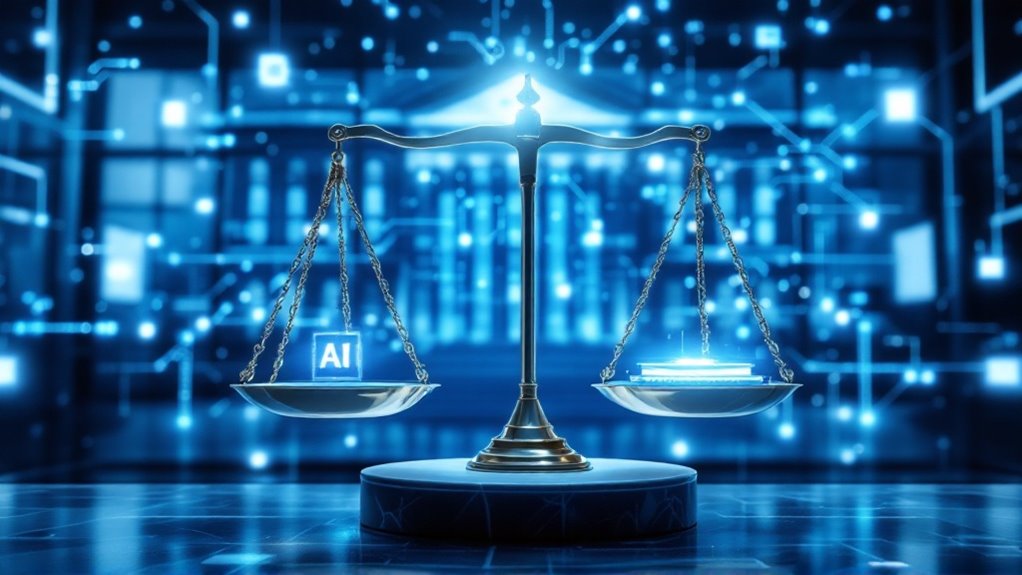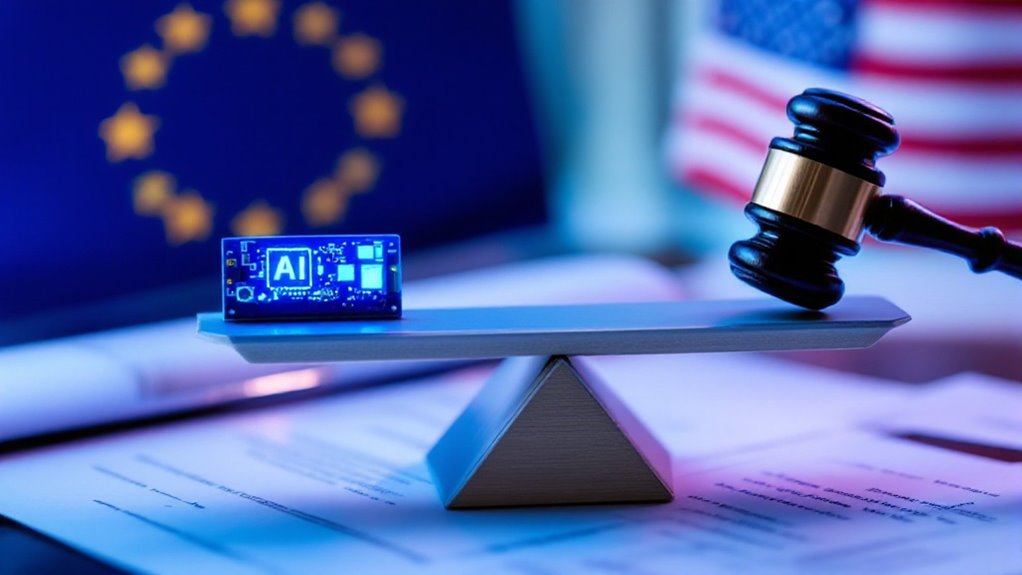AI governance frameworks vary globally, with the EU’s thorough AI Act contrasting America’s patchwork approach and China’s content-focused regulations. Most systems classify AI by risk level—the riskier the tech, the stricter the rules. Ethical considerations like transparency and non-discrimination drive regulatory efforts, while international bodies scramble to create unified standards. With regulatory activity doubling since 2022, organizations face a complex balancing act between innovation and compliance. The regulatory storm is just warming up.
While the AI revolution promises to transform every facet of modern life, governments worldwide are scrambling to establish guardrails before the technology outpaces our ability to control it.
Think of it as trying to build a fence around a creature that keeps morphing into different shapes—not exactly a simple weekend DIY project.
The EU has taken the first big swing with its AI Act, fundamentally telling the rest of the world, “We’ll go first, you’re welcome.”
The EU has boldly staked its regulatory flag in the AI wilderness, essentially sending everyone else a postcard from the future.
This thorough legislation classifies AI systems by risk level and imposes stricter requirements on applications deemed high-risk.
Meanwhile, the United States is taking more of a “let’s see what sticks” approach, with a patchwork of existing laws, agency guidelines, and Biden’s Executive Order 14110 attempting to corral the AI beast without strangling innovation.
The White House Office of Science and Technology Policy’s Blueprint for an AI Bill of Rights outlines five core principles to protect citizens from potential harms of automated systems.
China, unsurprisingly, has focused its regulatory energy on content control for generative AI.
Their approach basically says, “Sure, create anything you want—as long as we approve it first.”
Classic China move, right?
The global regulatory landscape extends far beyond just technology concerns.
Privacy, discrimination, liability, and product safety all get tangled in the AI regulatory web.
International organizations like the OECD, UNESCO, and the G7 are working to coordinate standards across borders, because AI doesn’t exactly respect national boundaries.
At the local level, cities like New York are passing their own rules on hiring algorithms.
It’s like each jurisdiction is building its own mini-Robocop to patrol its specific AI concerns.
Risk management has become the central pillar of governance frameworks worldwide.
All these regulatory efforts aim to achieve the delicate balancing act between fostering innovation and ensuring ethical considerations like safety and transparency.
Organizations must now identify, evaluate, and mitigate AI risks throughout the entire lifecycle—from conception to deployment and beyond.
The pace of regulation is accelerating rapidly, with AI appearances in legislative proceedings doubling from 2022 to 2023.
New safety institutes are popping up in major economies like mushrooms after rain, signaling that this regulatory storm is just beginning.
Brazil is entering the global regulatory arena with its comprehensive AI Bill that emphasizes human rights and transparency in AI development.









